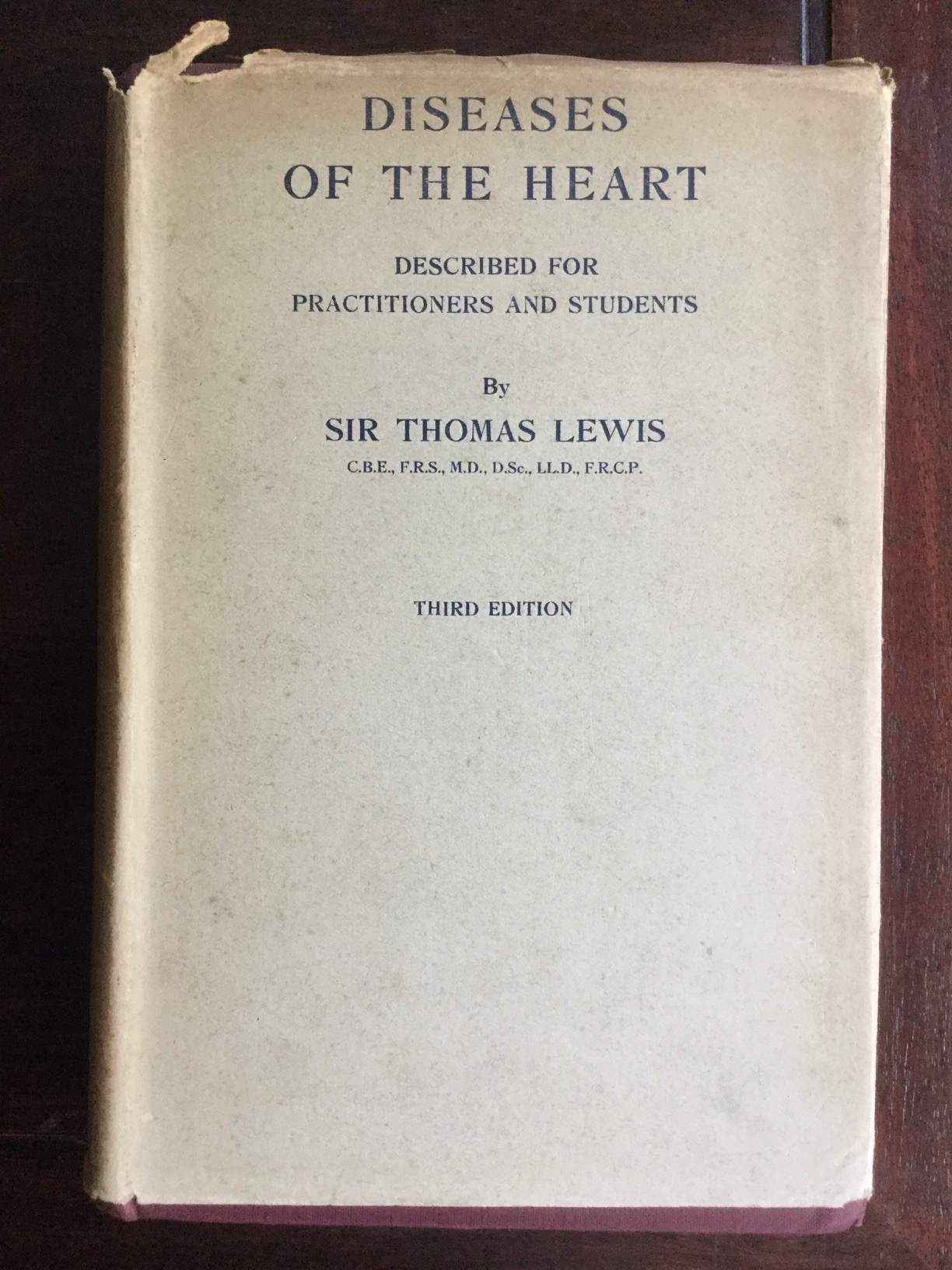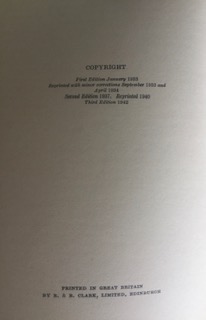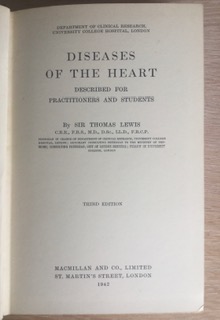R400.00
– A Classic in British Cardiology
“Lewis, Sir Thomas (1881–1945) Eminent Welsh physiologist and cardiologist, born in Cardiff, and received his preclinical training there at the University College. He moved to University College Hospital, London in 1902 and later became chief of the department of research. He was a pioneer in application of the electrocardiographic method for examination of the heart. He performed a series of investigations on normal hearts between 1909 to 1916 which led to the explanation of the QRST complexes as a sequential spread of electrical excitation over the different parts of the atria and ventricles. He also described ‘effort syndrome’, a condition earlier noted in 1871 amongst soldiers in the American civil war by Da Costa from Philadelphia. Einthoven’s (1860–1927) string galvanometer was improved by Lewis who added two strings instead of a conventional single string, making it possible to record different leads. He postulated a histamine-like substance (H substance) as a cause of anaphylaxis in 1924. Some of his important publications include: Clinical Electrocardiography (1917), Harvian Oration on Clinical Sciences (1933), Diseases of the Heart (1933), Clinical Science (1934), Vascular Disorders of the Limb, and Clinical Disorders of the Heart Beat . On effort syndrome, auricullar fibrillation, rheumatic carditis, percarditis, cardiomegaly.”
Price: R400.00
Edition: Third edition
Published: 1942
Publishers: Macmillan and Co
Condition: Dust jacket in fair condition with small tears around the edges and light soiling on the covers. Hard cover in good condition with minor shelf wear around the edges. Internally in very good condition – clean and tightly bound.
1 in stock
Description
– A Classic in British Cardiology
“Lewis, Sir Thomas (1881–1945) Eminent Welsh physiologist and cardiologist, born in Cardiff, and received his preclinical training there at the University College. He moved to University College Hospital, London in 1902 and later became chief of the department of research. He was a pioneer in application of the electrocardiographic method for examination of the heart. He performed a series of investigations on normal hearts between 1909 to 1916 which led to the explanation of the QRST complexes as a sequential spread of electrical excitation over the different parts of the atria and ventricles. He also described ‘effort syndrome’, a condition earlier noted in 1871 amongst soldiers in the American civil war by Da Costa from Philadelphia. Einthoven’s (1860–1927) string galvanometer was improved by Lewis who added two strings instead of a conventional single string, making it possible to record different leads. He postulated a histamine-like substance (H substance) as a cause of anaphylaxis in 1924. Some of his important publications include: Clinical Electrocardiography (1917), Harvian Oration on Clinical Sciences (1933), Diseases of the Heart (1933), Clinical Science (1934), Vascular Disorders of the Limb, and Clinical Disorders of the Heart Beat . On effort syndrome, auricullar fibrillation, rheumatic carditis, percarditis, cardiomegaly.”
Price: R400.00
Edition: Third edition
Published: 1942
Publishers: Macmillan and Co
Condition: Dust jacket in fair condition with small tears around the edges and light soiling on the covers. Hard cover in good condition with minor shelf wear around the edges. Internally in very good condition – clean and tightly bound.
Additional information
| Weight | 300 g |
|---|










